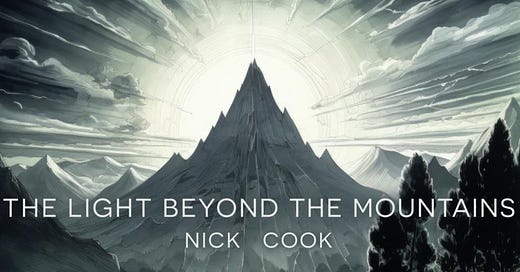(Cover image © Tristan Maduro)
Chapter 32: Gnosis
In his mystical visions, Ben told me, Philip Dick felt he had glimpsed the true nature of reality behind the façade of our material world. Unlike the mainstream Christian Church, which focused on faith, sacraments, and institutional authority, the Gnostics emphasised personal spiritual experience – gnosis, as Ingo had once described it to me: direct knowledge of things hidden behind the interface of our perception.
Suppressed as heretics by the Church Fathers, the Gnostics faded from history after the 4th century, only to be rediscovered in the modern era through the 1945 discovery of the ‘Nag Hammadi Library’, a treasure trove of Gnostic texts buried for centuries in the Egyptian desert.
At the heart of their cosmology lay what Gnostics called the Pleroma, a realm of perfect divine beings - Aeons - emanating from the One, the Source, the Divine.
Among them was an Aeon called Sophia, whose name means ‘Wisdom’.
All the Aeons were part of the divine order. Sophia, however, played a central role in Gnosticism due to what amounted to a single mistaken, impulsive action.
Her sin had been to seek to comprehend the unknowable essence of the Pleroma - an ‘act of overreach’ that had caused her to fall from its core in the heart of our galaxy into one of its myriad spiral arms; at the end of which lay a small star surrounded by a cluster of rocky and gaseous planets - our solar system.
Her ‘misguided act’, Ben reminded me, resulted in the creation of ‘the Demiurge,’ a malformed Aeon, who, unlike Sophia and the others, was utterly ignorant of the universe’s true nature, believing himself to be its sole creator.
The Demiurge’s first act was to create a group of sub-rulers called the Archons, who executed his will by creating the material universe. Following his instruction, they then created Adam. But according to the Gnostics, Adam was little more than an empty shell, the image of the Demiurge; the false god, inanimate and soulless.
Utterly remorseful at what she’d done, Sophia secretly breathed the spark of divine light into humanity - a gift that went some way towards her redemption.
By now, her memory of the Pleroma was partial - like the exile she was, she had only a dim sense of the home she yearned to return to; and this became the template for humanity’s ‘forgetting’ - a state reinforced by the Archons, who were jealous that humans had something they didn’t - the gift we think of as a soul.
The Archons’ purpose - if it can be described as such - has been to keep us from remembering that this is who we really are: a shard - a splinter - of the divine.
And thence, Ben said, we go to the Black Iron Prison of VALIS: a world of dense matter populated with false laws and false religions - a control system - designed to separate us forever from our potential.
“Do you see where this goes?” he said, as he drew his lecture to a close. “The Gnostics sought knowledge through an evidential knowing of the true nature of reality via techniques that today include meditation, clairvoyance, remote viewing, and psychedelics.”





